Coffee workshop study classroom [hand-made & siphon brewing demonstration] Costa Rican raisin treatment
For professional baristas, please follow the coffee workshop (Wechat official account cafe_style)
What I want to share with you today is the comparative cooking demonstration of hand brewing and siphon.
The protagonist is the most popular recently-Mozart of the Carnett Manor raisin processing musicians series in the Tara Pearl region of Costa Rica.
……
All right, let's call it Mozart for short.
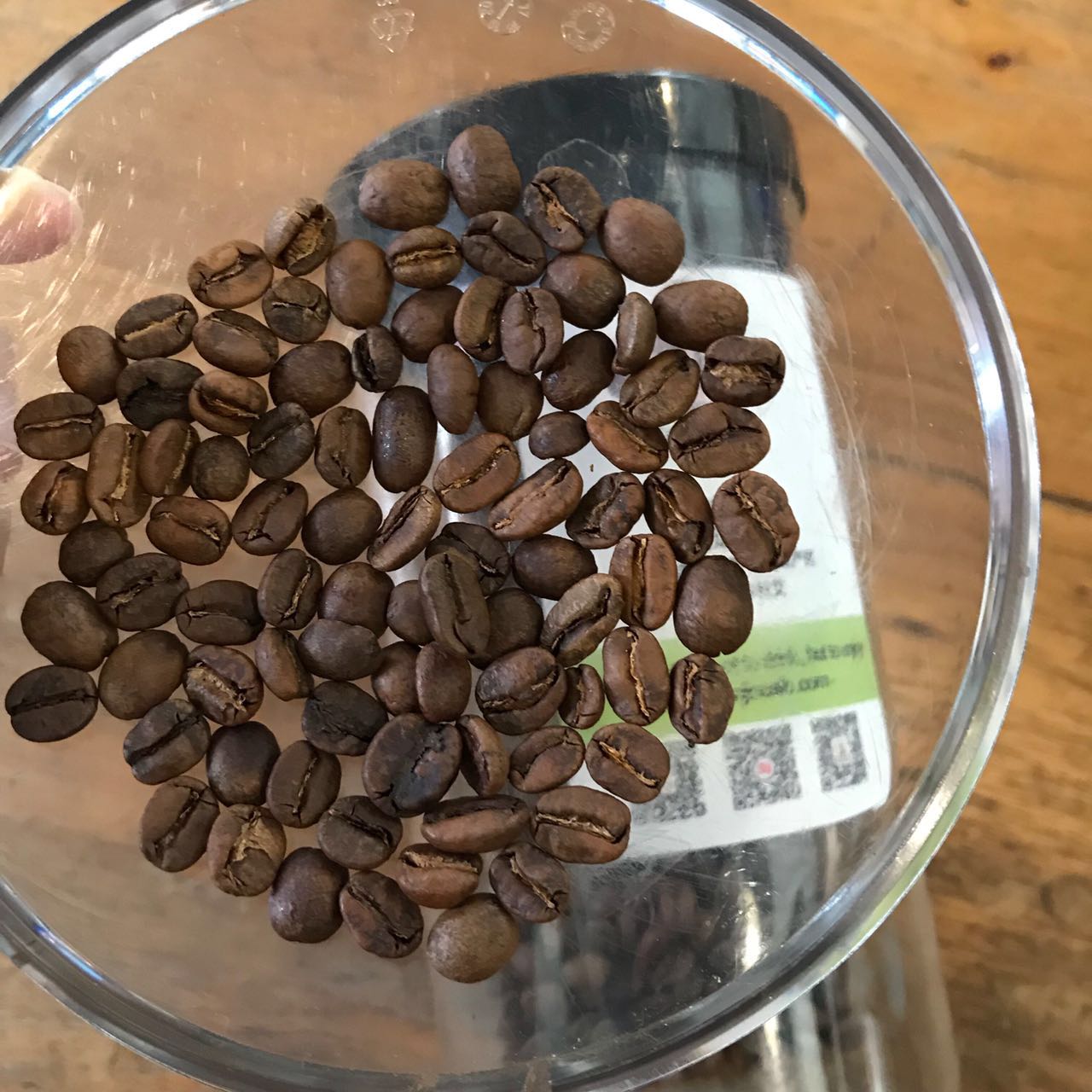
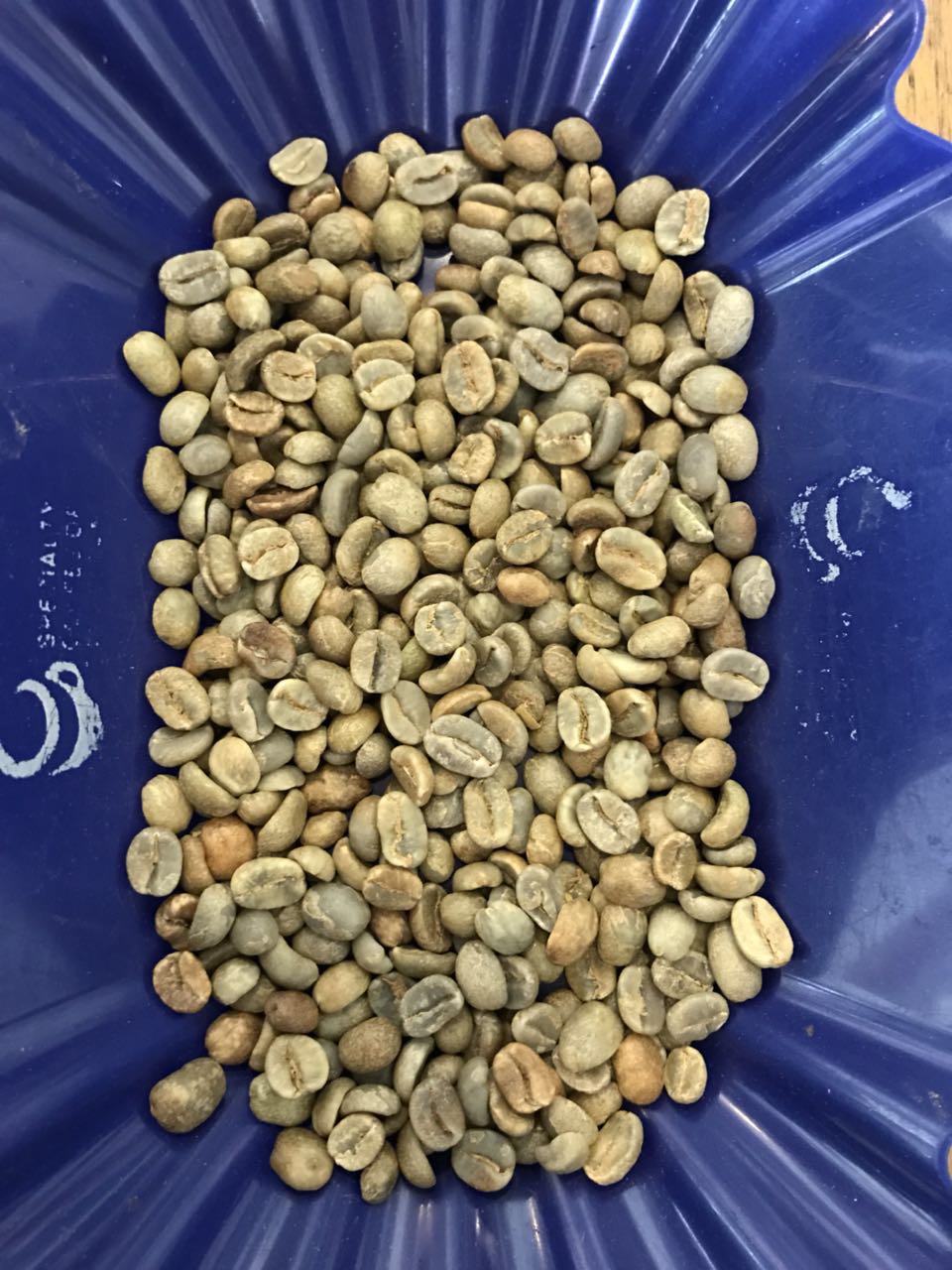
Country: Costa Rica
Grade: SHB
Producing area: Tarazhu
Baking degree: medium baking
Treatment: raisins and double fermented honey
Variety: Huang Kaduai
Manor: Carnett Manor
Flavor description: sweet and colorful fruits, honey, toffee
[Carnett Manor]
Canet Manor is located in the highest growing area of Tarrazu coffee in Costa Rica, which is the densest fruit growing area in Costa Rica. The owner of the manor mainly grows passion fruit, but the amount of coffee is very small, only in a special area to grow coffee, take special care, only pick ripe coffee yellow fruit. The unique variety of Huang Kadu Aimi in the manor is treated with rich changes in the overall taste and a full sense of grease plus good cleanliness! The sweetness is excellent, with rich and varied levels of acidity from berries to citrus.
Hand to Mozart:
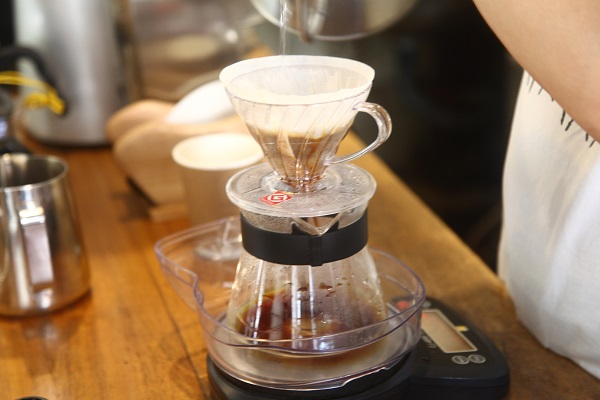
V60 hand punch parameters:
Degree of grinding: BG mill: 4e
Water temperature: 90 degrees
Powder weight: 15g
Powder / water ratio: 1:15
Total cooking time: 1 minute 50 seconds.
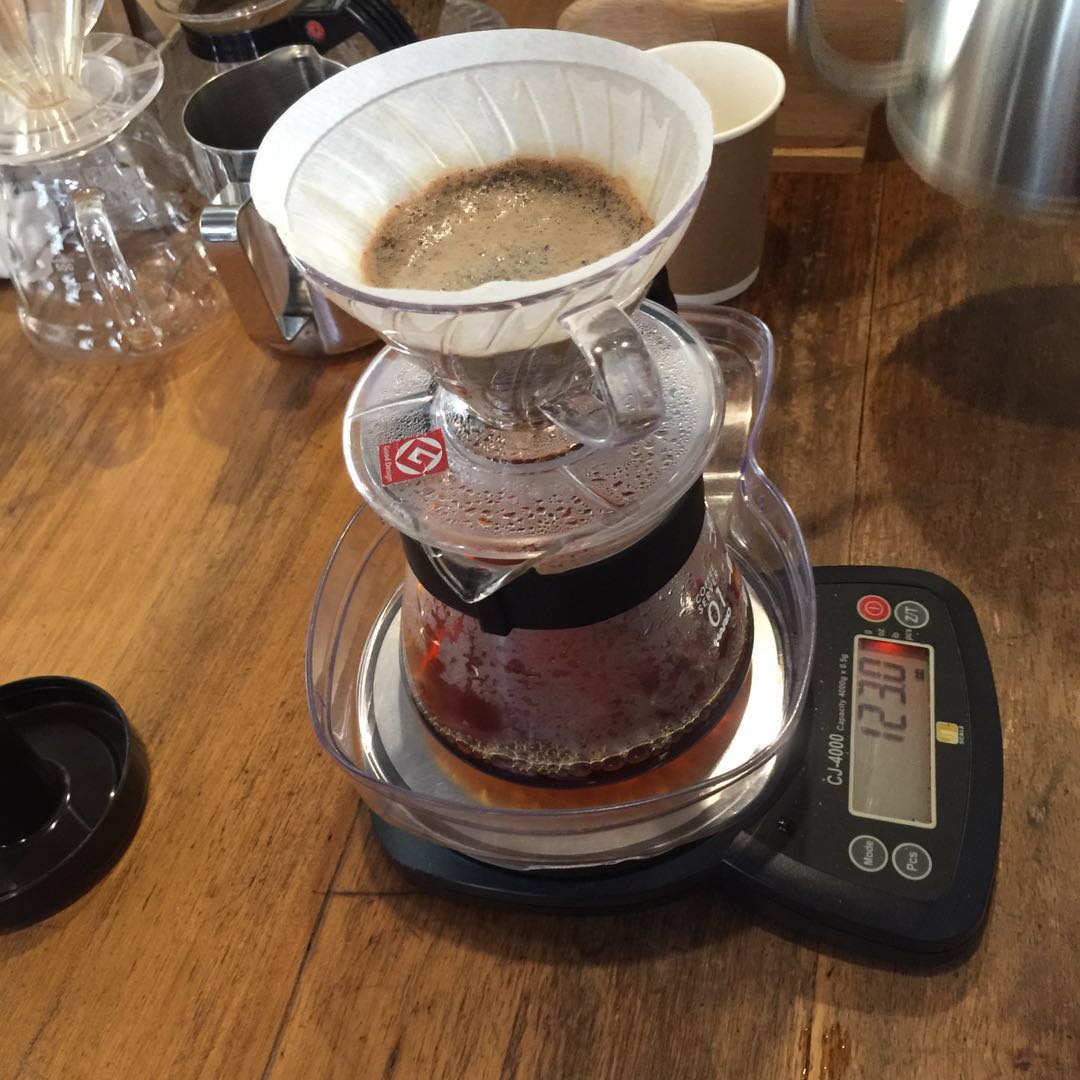
After the first stage of water injection, wait for the liquid level to drop.
Specific manual cooking techniques:
Steaming: 30 grams of water, 30 seconds
The first stage of water injection: slowly circle water injection 90 grams, to 120 grams reading stop, wait for the liquid level to drop to the powder layer surface.
The second stage of water injection: increase the amount of water around the circle, inject 105 grams of water, stop the reading to 225 grams, wait for the powder layer to be exposed, remove the filter cup.
Siphon Mozart:

Siphon cooking parameters:
Powder weight: 20g
Water temperature: 91 degrees
Degree of grinding: BG mill: 5D
Powder / water ratio: 1:12
Total cooking time: 1 minute 10 seconds.
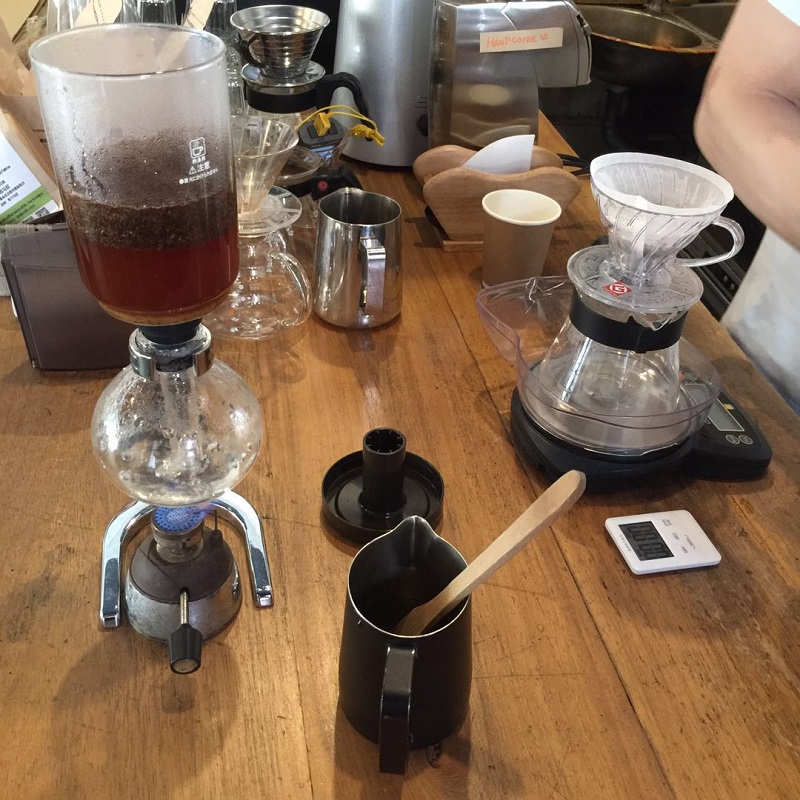
Specific siphon cooking techniques:
Use the post-powder method, that is, first boil the water to the pot, and then add powder to stir.
The first step: boil until the fisheye bubble is formed, insert the pot tightly; when the hot water rises to the pot, measure the water temperature, 91 degrees. Adjust the firepower until the water column is stable and there are no bubbles in the upper pot. Then cross the cross and gently press the powder to wet completely.
The second step: steam for 38 seconds, observe the bubble state of the powder layer, stir in a circle for the first time, and stir three times.
Step 3: boil to 52 seconds, turn off the engine, wait for the siphon, and the coffee flows back to the pot.
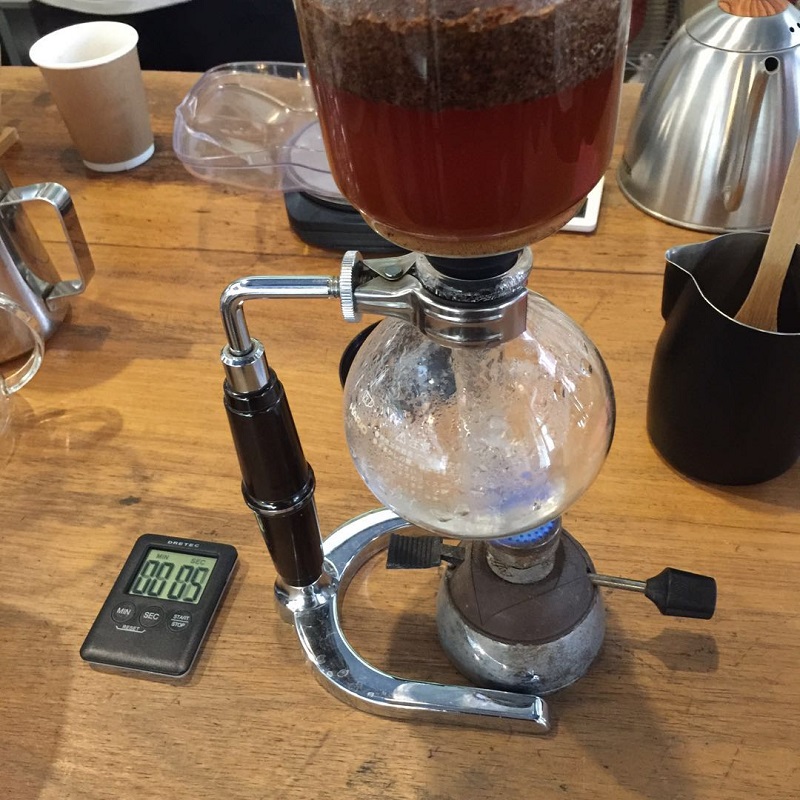
It is very important to stir the powder for the first time. The powder should be moist evenly but not completely dispersed.
Flavor comparison of [hand flushing-siphon]
V60 hand-made Mozart: rich aroma of flowers and fruits, fresh and fermented taste, smooth taste, obvious layering, soft acidity after the temperature drop, and a slight sense of tea at the end.
Siphon Mozart: the sweet and sour taste is prominent and full-bodied, but the fermented taste and sour taste are not irritant. at first, the taste is not as smooth as the hand. after the temperature drops slightly, the taste becomes softer and the sweetness is more obvious.
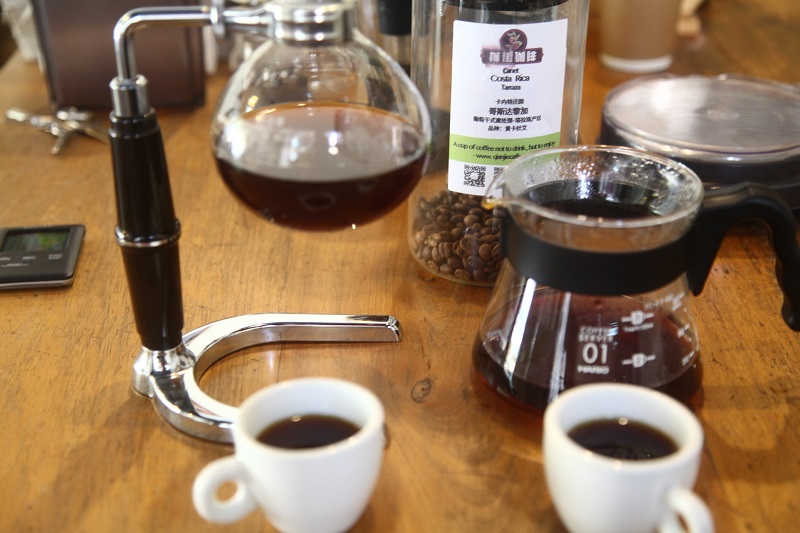
Explanation of cooking parameters of hand-made VS siphon
First of all, we need to understand the characteristics of Mozart beans.
Mozart's cup test flavor is as follows: sweet and colorful fruits (strawberry, apple, grape, citrus) unforgettable taste of honey and toffee, delicate and mellow as silky cream (such as the long finish of Darjeeling black tea)
Therefore, our main extraction targets are the sweet and sour flavor and fermented flavor in the front and middle, as well as the mellow finish.
Costa Rica's SHB beans are relatively high above sea level, hard, and have excellent sweet and sour texture (that is, they are resistant to extraction), so even if they are moderately baked, we can extract them with water of 90 degrees Celsius and 91 degrees Celsius, without having to worry too much about overextraction and bitterness.
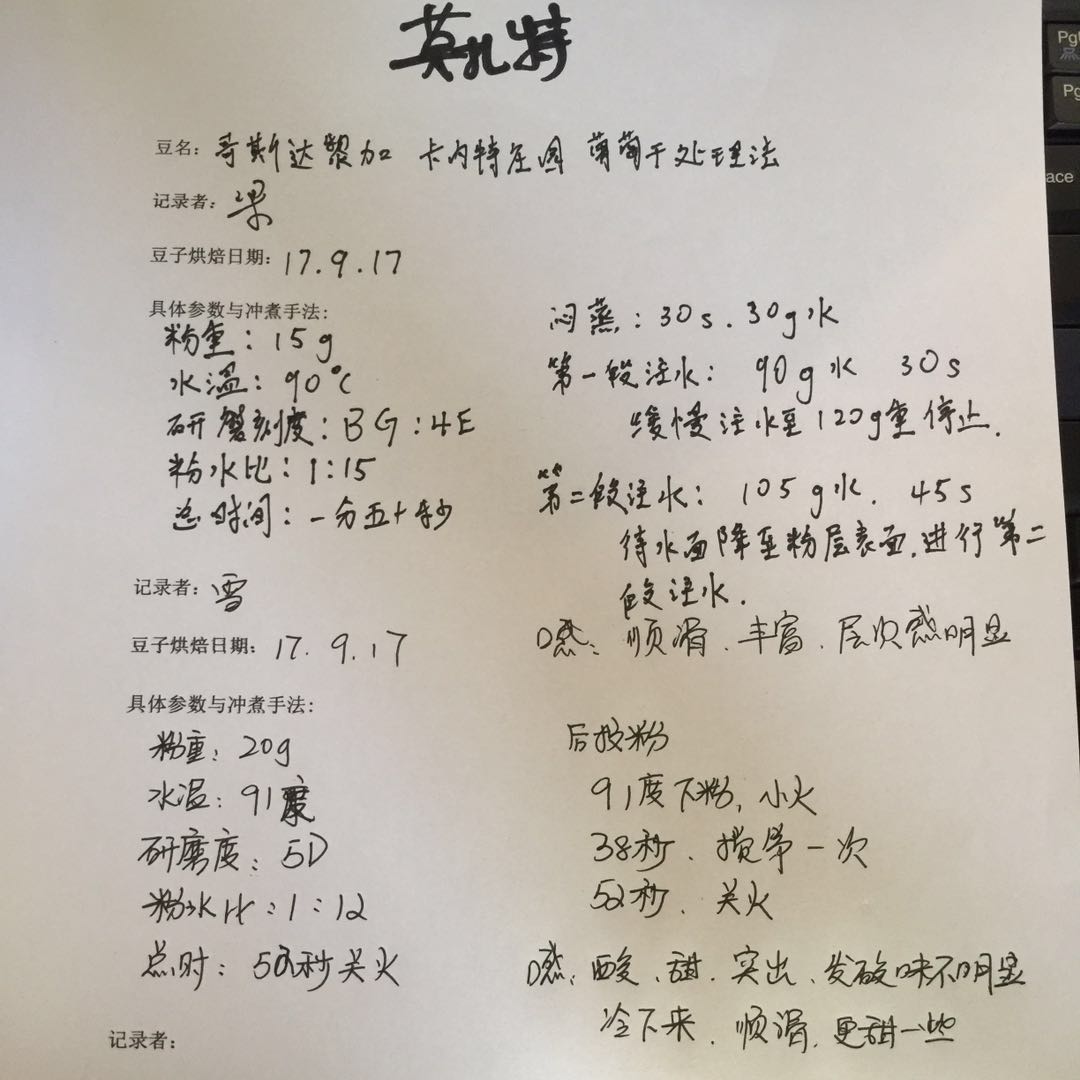
Comparison of original cooking record table
Degree of grinding: BG mill: 4e VS 5D
As the baking time of this bean is September 17, just 10 days, almost reached the best flavor period; exhaust reaction into the end; hand filter cup V60 filtration speed is faster, to sum up, hand grinding needs medium fineness, while siphon grinding is slightly thicker than hand grinding.
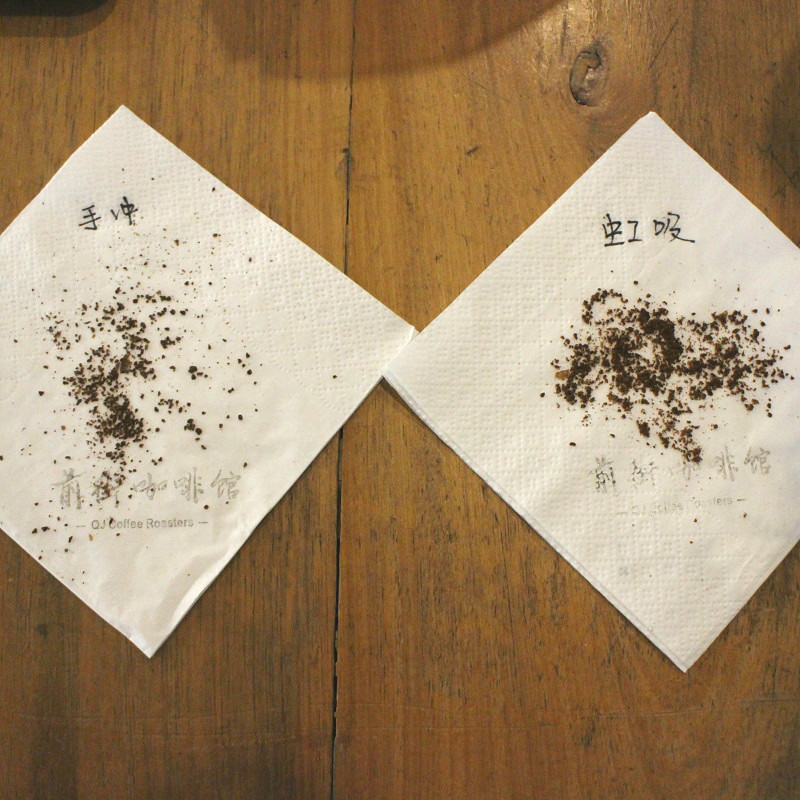
Water temperature: 90 degrees VS 91 degrees
Hand extraction time is long, so the water temperature of 90 degrees is suitable, you can extract more complete and rich flavor substances without over-extraction.
The siphon extraction time is short, so the relative water temperature is 91 degrees, which can balance the extraction rate.
Powder / water ratio: 1:15 VS 1:12
The extraction process of hand flushing is a cooling extraction process, the extraction temperature of the latter stage is lower than that of the front stage, and it is relatively difficult to overextract. Increasing the ratio of powder to water can improve the sense of hierarchy and richness.
Siphon extraction is an immersion extraction process, the lower the extraction efficiency (concentration problem), but can maintain a high water temperature, so that a certain section of the flavor is relatively complete and prominent. The powder water is relatively small in order to highlight the sour and sweet flavor of the front and middle section and avoid the woody flavor of the back section extracted too early.
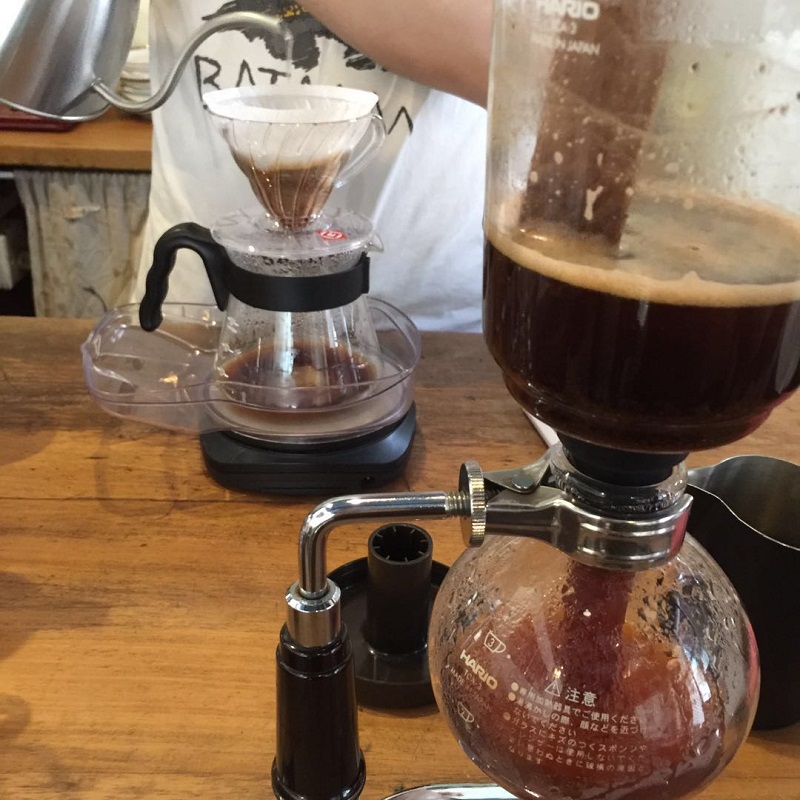
Finally, it is concluded that:
This Costa Rican Mozart is a bean with obvious flavor and unique fermented flavor, which is especially suitable for hand brewing and siphon, so today we chose this bean as the protagonist of the brewing demonstration (the protagonist is obviously a non-photogenic barista).
As it was the first time to make a demonstration of brewing, there was no time for video recording, so we had to take pictures and explain it. (due to lack of manpower, our poor baristas had to cook and take pictures of each other. ), try to explain it in video in the future. If there is anything wrong, you are welcome to point out that the cooking parameters are for reference only.
Everyone is interested in which beans are more interested, welcome to leave a message and like, we choose to make the next issue of cooking demonstration.
Important Notice :
前街咖啡 FrontStreet Coffee has moved to new addredd:
FrontStreet Coffee Address: 315,Donghua East Road,GuangZhou
Tel:020 38364473
- Prev
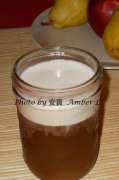
Frozen Sea Salt Coffee hand Light Grandma cover Chilled Sea Salt Coffee making course
Professional baristas Please follow the coffee workshop (official Wechat account cafe_style) if you are not in the habit of keeping whipped cream in the refrigerator, it is more convenient to use canned milk. My coffee maker often has light milk in the fridge. Therefore, it is very convenient to use this method to make a milk lid, and it is cheaper than using whipped cream. Keep the bottle and all ingredients cold, add coconut oil, Apple Cider Vinegar and shake the bottle.
- Next
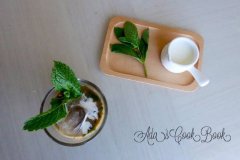
Philz coffee can be easily made in 10 minutes at home. | Mint Mojito Coffee
Professional barista exchanges please pay attention to the coffee workshop (Wechat official account cafe_style) San Francisco specialty coffee shop in recent years more and more in recent years the rise of the fastest in recent years, Philz must be one of the main features: listen to the needs of customers, slowly rush out every cup of coffee that suits your taste, the key point is different from the ordinary coffee shop, can only sell American coffee, latte and so on
Related
- What is the meaning of lactic acid fermentation with coffee bean treatment?
- How to judge the state of foam by sound?
- How does the latte pull out the unicorn pattern? Come to get for a little trick to improve the flower pull!
- Will flower pulling affect the taste of the latte?
- Do you know the history of coffee?
- The difference between honey treatment and sun washing what is raisin honey treatment?
- What kind of milk can a novice use to make coffee foam to keep the foam longer? The correct method and skills of milking tutorial sharing
- Why do washed coffee beans taste sour? Flavor characteristics of washed Coffee
- Introduction to the skill of how to practice the size and height of water injection around the circle of hand-brewed coffee
- How do beginners practice coffee flower drawing from scratch?

